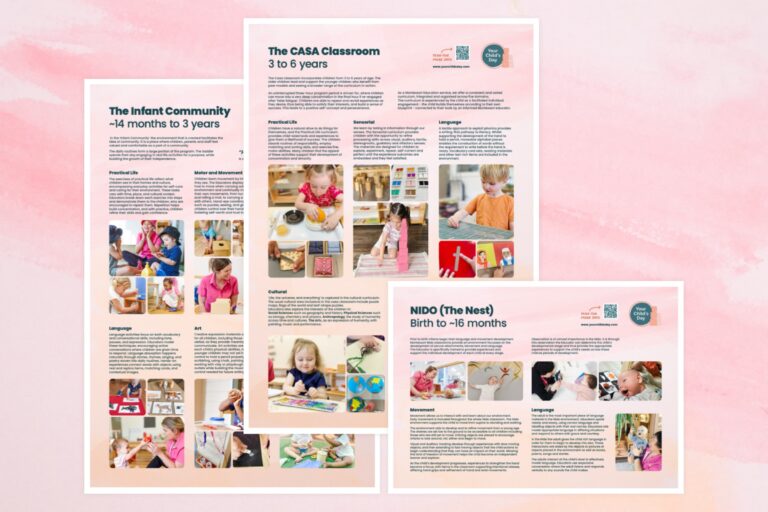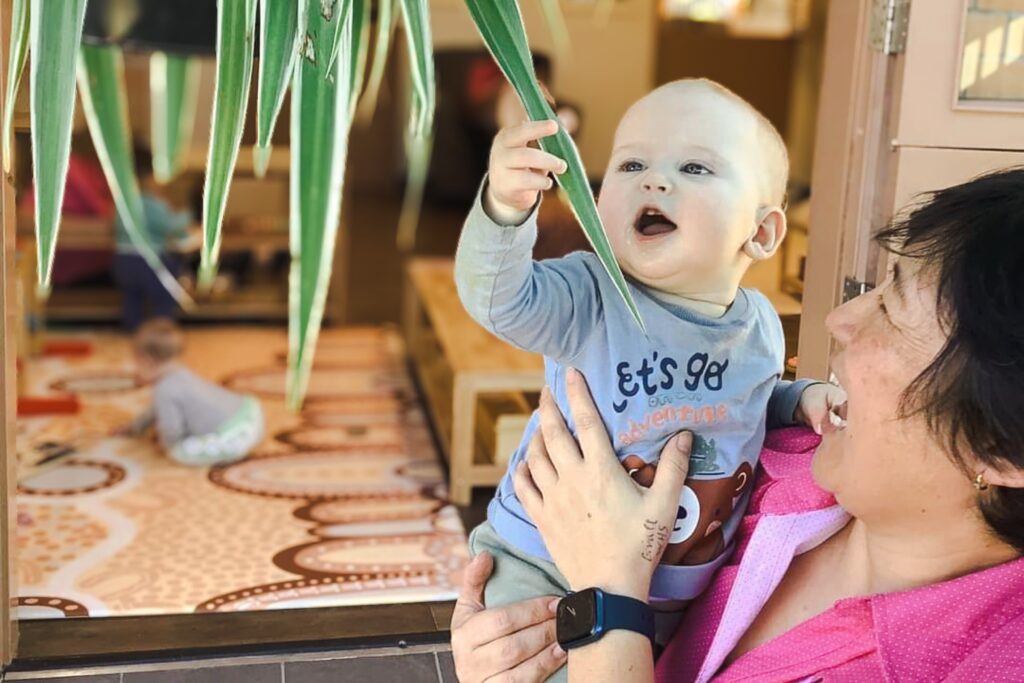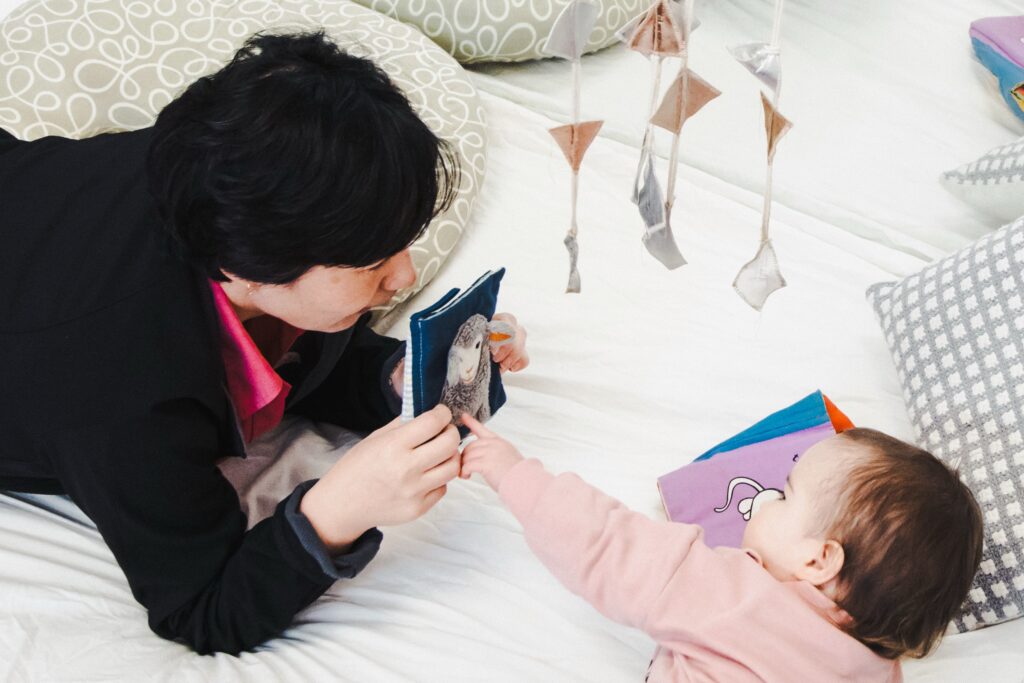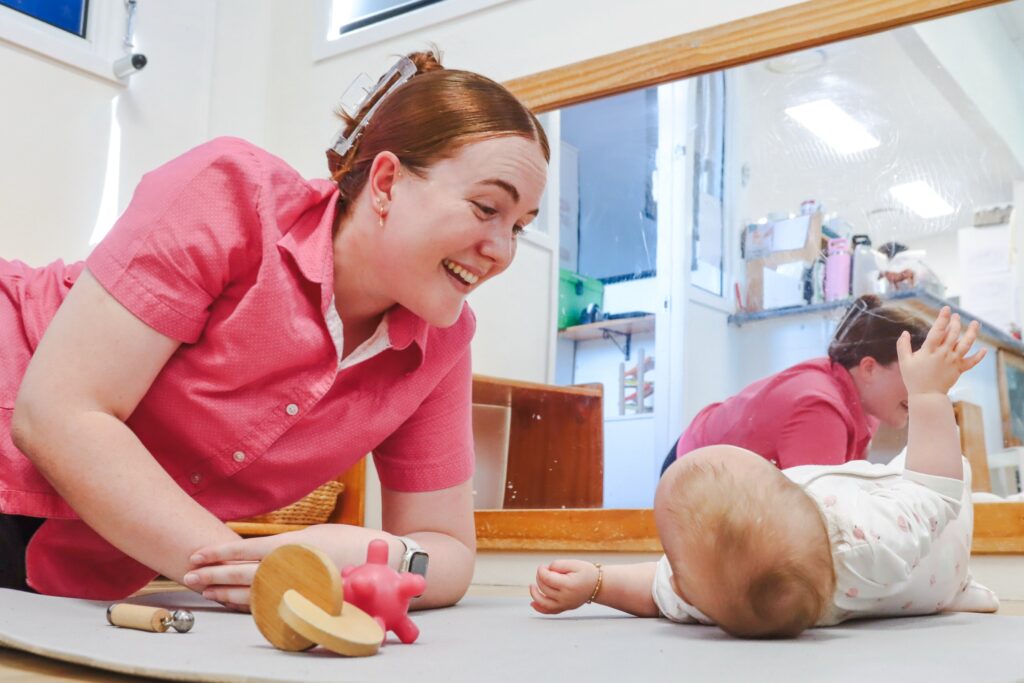Movement
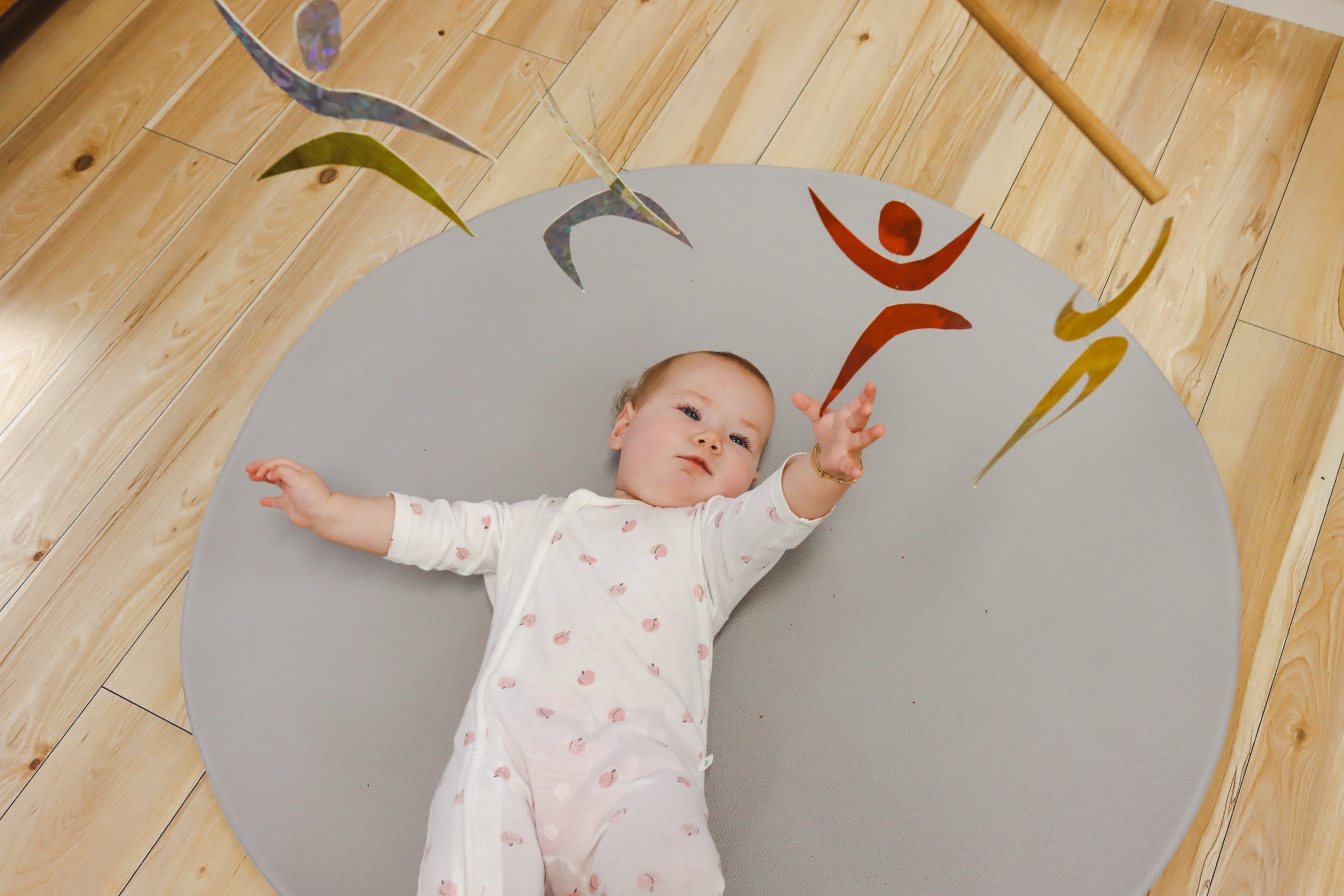
Movement allows us to interact with and learn about our environment. Early movement is included throughout the whole Nido classroom. The Nido environment supports the child to move from supine to standing and walking.
The environment aids to develop and to refine movement from a young age. The shelves are set low to the ground to be accessible to all children including those who are still yet to move. Enticing objects are placed strategically to encourage infants to look around, roll, slither and begin to move.
Visual and Auditory tracking develop through experiences with slow moving objects, and then extending to fast moving objects that the child actions to begin understanding that they can have an impact on their world. Allowing this kind of freedom of movement helps the child become an independent learner and explorer.
As the child’s development progresses, experiences to strengthen the hand become a focus, with many items in the classroom supporting intentional release, differing hand grips and refinement of the hand and wrist movements.
A child can’t move without knowledge and they gain this by watching others do it. They learn by watching and observing and then copying what others do. The absorbent mind. The Educator moves slowly, being aware of who you are and how you move as they are aware children will copy their movements.
When moving objects we need to demonstrate the movements one on one so that we know that we have the child’s attention. We need to make slow movements so that the child can see each step of the action to be able to analyse the movement so that they can then repeat it. We need to remember that even when you are not demonstrating to a child that you are performing each movement the same way when in the environment so that the children do not learn ‘bad habits’ or become confused with seeing multiple ways of doing things.
Educators understand the need to allow the child to struggle with their movement challenges and when to step in.

